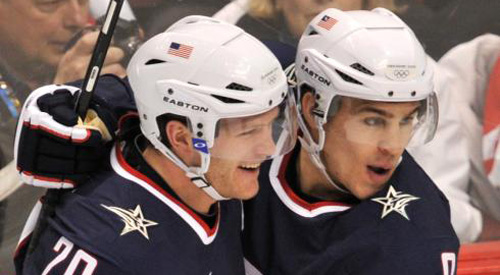
Let the real free agency period begin
July 1 is normally described as a free agent frenzy, as players sign massive deals that make eyes pop. This year, however, the frenzy has been downgraded to a minor fever.
Teams haven’t been as quick to throw major contracts at players this offseason. With underwhelming free agent options, most teams have decided to wait, either for prices to come down or trade talks to heat up.
This isn’t because of a lack of money either. More than half the league sits below the current cap floor of $54.2 million, and typical big spenders like the Leafs and Rangers have barely exceeded that threshold.
Certainly one factor for the lack of movement is Zach Parise and Ryan Suter. The fact that the two premier free agents took a few days to sign may have caused teams to bide their time before moving onto secondary options, such as Matt Carle or Alex Semin. Now that Parise and Suter have signed with the Minnesota Wild, the market should heat up.
In addition to being held up while waiting for dominos to fall, teams might be hesitant to spend big because of the expiring CBA. Once a new agreement is reached between the players and owners, there is no guarantee that the salary cap will stay as high as it currently is.
If the owners are able to scale back the percentage of players’ revenues from 57 to 50 percent, the cap ceiling next year will fall somewhere around $65 million, with the cap floor closer to $50 million. If the cap does drop to that level, more than two-thirds of the league would already be over the cap floor, which means taking the Florida Panthers route of overpaying everyone in sight to get ready for the season would become unnecessary.
[php snippet=1]
The teams that do need to hit the cap floor may also explore cheaper options in trade talks as they attempt to fill their rosters. With the future CBA currently undefined, handing out a long-term deal for a free agent has the chance of landing a GM in salary cap hell. Instead, teams may look for one-year options on the trade market.
For example, Toronto’s Tim Connolly comes with a hefty $4.75 million cap hit after having a down season last year. With few true centers left in free agency, taking a chance on one more year of Connolly might be better than having to pay for multiple years of an available UFA. The cost to acquire Connolly would be minimal and he would be off the books by the end of the first year of the new CBA, giving teams flexibility under the new agreement.
For other teams that have available cap space, there are better options to improve besides free agency.
Teams may be holding onto cap space in the hopes of acquiring one of the big-ticket items on the trade market. Players like Rick Nash, Roberto Luongo and Bobby Ryan, all who come with a price tag in excess of $5 million per year, are rumored to be on the block. If the option for a team is between overpaying a fringe second liner for over $4 million, why not spend a few assets to get a proven front line player for only a few million dollars more?
Even someone like Shea Weber, currently an RFA, might become available now that Suter has decided to leave Nashville. If this happens, teams would line up to trade for Weber (assuming the price tag isn’t astronomical), but with a cap hit north of $7 million, those who’ve already spent aggressively during the first few days of free agency might not be able to fit a player like Weber on the roster.
For a variety of reasons, the UFA frenzy hasn’t exactly started yet. Sure, some teams have overpaid for players like Dennis Wideman, but for the most part GMs are being strangely cautious. Now, the question may no longer be who is going to overpay, but if anyone even will.
[php snippet=1]

